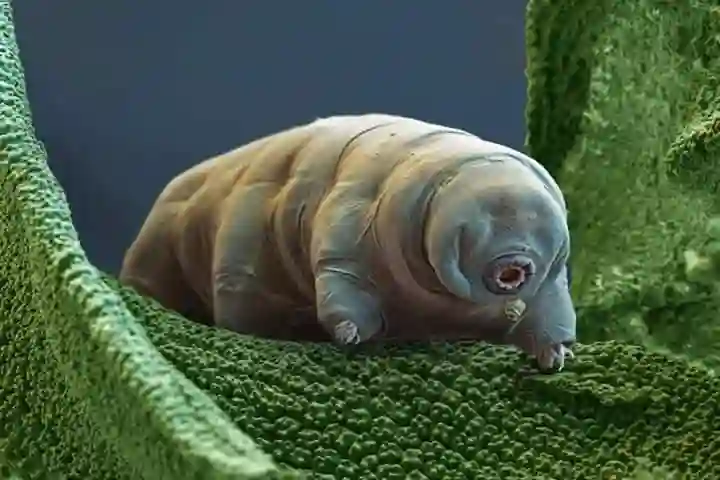Watching the tardigrades walk one wonders as to why they do it at all. Being fat and slow they are called the “water bears”, when they were seen for the first time by the scientists.
It has been observed that animals who are small and soft like tardigrades — 0.02-inch-long — rarely have legs and do not bother to walk. Rounds worms for instance, who move around by crawling over surfaces. But tardigrades are different as using their legs – eight in number – they move across freshwater and marine sediments, sand dunes and soil.
According to an article in sciencedaily.com, the Proceedings of the National Academy of Sciences (PNAS) recently studied these creatures who walked and found that their gait was quite similar to that of insects who were 500,000 times their size. This according to the experts implied two things. Either they had a common ancestor or that there was an evolutionary advantage in walking like species who were much larger than tardigrades.
Talking about these water bears, Jasmine Nirody, a Fellow in Rockefeller's Center for Studies in Physics and Biology observed: "Tardigrades have a robust and clear way of moving — they're not these clumsy things stumbling around in the desert or in leaf litter. The similarities between their locomotive strategy and that of much larger insects and arthropods opens up several very interesting evolutionary questions."
In order to understand how tardigrades walked, Nirody and her colleagues observed them closely. "If you watch tardigrades under a light microscope for long enough, you can capture a wide range of behaviour. We didn't force them to do anything. Sometimes they would be really chill and just want to stroll around the substrate. Other times, they'd see something they like and run towards it,” said Nirody.
Also read: Rattlesnakes, masters of fatal deception
When walking in a relaxed manner, these water bears lumber about half a body length per second while going whole hog, they covered two body lengths in the same amount of time. It was not this but something else that caught the team’s attention – that is, on gaining momentum how tardigrades feet contact the ground. They ran like insects, hastening at increasing speeds but without changing their stepping patterns. This was different from vertebrates who use different gaits for each speed.
Nirody remarked: "When vertebrates switch from walking to running, there is a discontinuity. With arthropods, all stepping patterns exist along the same continuum."
Now the team tried to understand the reason for this similarity between water bears and insects.
It is possible that the water bears may share common ancestors, even a common neural circuit, with insects like ants, fruit flies etc. Some scientists suggest putting the tardigrades within the proposed panarthropod clade. This would bring under its ambit insects, crustaceans, velvet worms, and water bears.
The alternative suggestion is that water bears took the style of walking and running of insects because of the evolutionary benefits it had. They found that it was the best gait to navigate in an unpredictable terrain.
Also read: Koreans design robotic chameleon that will turn the real one green with envy
Both these possibilities fascinate Nirody. “If there is some ancestral neural system that controls all of panarthropod walking, we have a lot to learn. On the other hand, if arthropods and tardigrades converged upon this strategy independently, then there's much to be said about what makes this strategy so palatable for species in different environments."
The water bears' gait has some interesting implications too for current technology and science. Understanding its gait may help the growing fields of soft and microscale robotics.
Through the study of how small creatures evolved to walk and run in environments and habitats that were challenging, scientists can learn much and this will have a direct bearing on designing robots that can work on a microscale and manage to squeeze and work in tiny spaces.
Speaking on this aspect Nirody remarked: "We don't know much about what happens at the extremes of locomotion — how to make an efficient small walker, or how soft-bodied things should move. Tardigrades are an important porthole into soft-bodied, microscale locomotion."




















